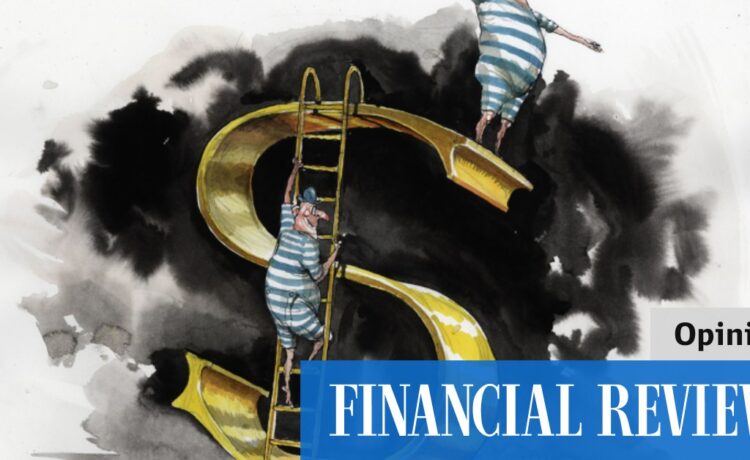Equity markets were expected to suffer as the combination of weak demand and sharply higher interest rates squeezed profit margins and corporate earnings.
Instead, the US economy defied the pessimists, with real GDP growth rising by a respectable 2.6 per cent in 2023, while the jobless rate fell to near a 50-year low.
The frenzy over artificial intelligence resulted in eye-watering gains for the big US tech stocks, while a rout in the US bond market pushed the yield on benchmark US 10-year bonds to 5 per cent for the first time in 16 years (yields climb as bond prices fall).
Given the experts’ failure to anticipate how last year would unfold, it’s hardly surprising investors are treating their forecasts for this year with caution.
Those who followed the experts’ guidance felt first-hand how costly it can be to move too far from their benchmarks in terms of asset allocation. All the same, experts have a much better track record of picking market trends than most punters, so astute investors have concluded the best course of action is to be conscious of the consensus view, but not to have complete faith in their predictions.
And at this stage, the consensus among market pundits is 2024 will witness a rare soft landing for the US economy, as higher interest rates dampen economic activity and push inflation lower, but without pushing the jobless rate sharply higher. This will allow the Federal Reserve to push interest rates sharply lower, setting the stage for US share market rally to continue.
The risk, of course, is that the Fed drags its feet when it comes to cutting interest rates.
At present, futures markets are pricing in six rate cuts this year – with the first one coming at the Fed’s meeting in March – which would leave official US interest rates in the range of 3.75 per cent to 4 per cent by December. In other words, investors are much more optimistic about rate cuts than Fed officials, who have pencilled in three rate reductions this year from the present range of 5.25 per cent to 5.5 per cent.
Investors’ confidence that the Fed will embark on rapid-fire rate cuts is based on the sharp decline in US inflation, at a time when US economic activity is waning.
The problem is the sharp fall in US inflation largely reflects the loosening of pandemic-era supply constraints, along with falling energy prices. Meanwhile, the latest US jobs figures show the country’s labour market is defying expectations of a slowdown.
The US economy added a better-than-expected 216,000 jobs in December, and the unemployment rate held steady at 3.7 per cent.
But wages growth is picking up. Average hourly earnings climbed 0.4 per cent in December, leaving wages up by 4.1 per cent from a year earlier. Given that US consumer prices rose by 3.1 per cent in November from a year ago, this suggests real – or inflation-adjusted – earnings are now rebounding strongly after falling sharply in 2022.
Factory workers enjoyed particularly big pay rises. Wages for manufacturing workers jumped 0.9 per cent in December, following an 0.8 per cent rise in November. Those are the biggest rises in manufacturing wages in four decades.
This largely reflects the record pay deals clinched by the United Auto Workers with the Detroit Three automakers – General Motors, Ford and Stellantis – after six weeks of strike. As a result, car companies with production facilities in the US such as Toyota, Honda and Tesla have boosted pay for their non-union workers by 10 per cent or more.
Given that many of these wage hikes only take effect this month, it suggests strong rises in manufacturing wages will continue.
Fed officials are conscious the sharp fall in inflation has largely been confined to the goods sector. And they’ll be concerned that strong rises in manufacturing wages – along with continuing pressure on shelter costs and services inflation – could see US inflation level off at a higher rate than the 2 per cent target.
This means experts’ predictions of benign market conditions in 2024 could be left in tatters if the Fed decides to remains on hold for longer than markets are expecting.





